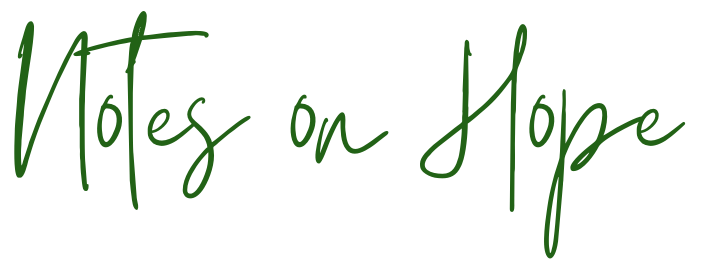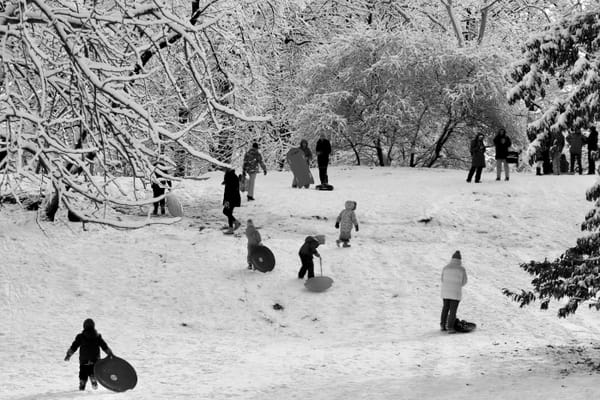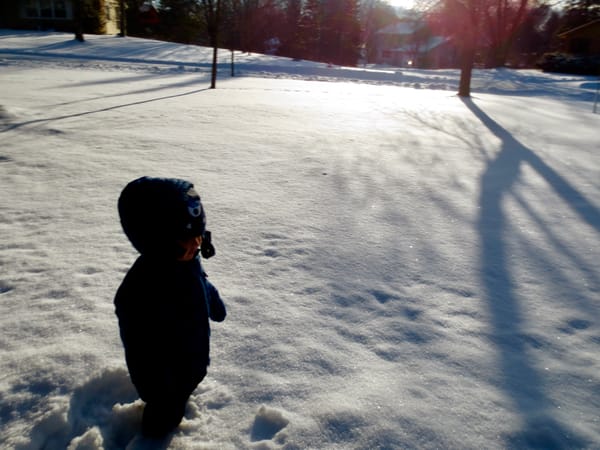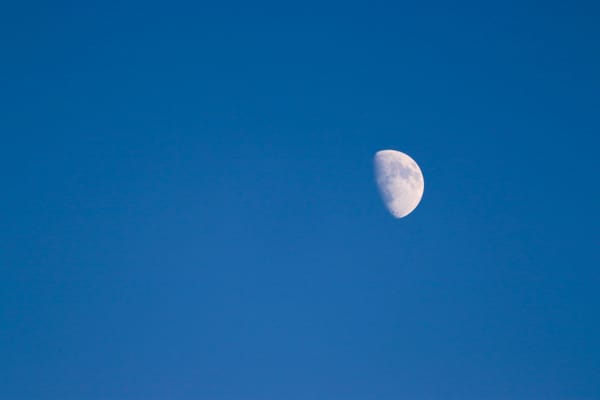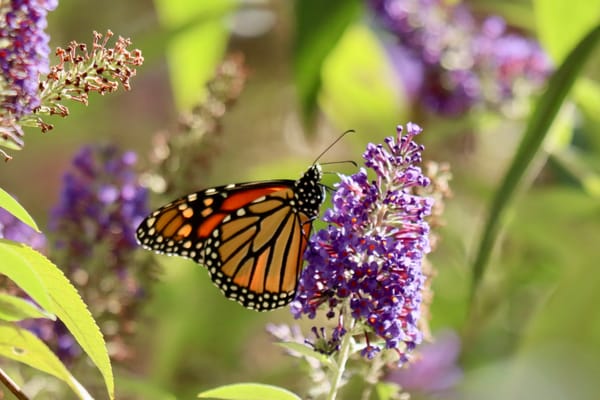Following Desire Lines
Learning to hold compassion and curiosity in equal measure

“It was already late
enough, and a wild night,
and the road full of fallen
branches and stones.
But little by little,
as you left their voices behind,
the stars began to burn
through the sheets of clouds,
and there was a new voice
which you slowly
recognized as your own,
that kept you company
as you strode deeper and deeper
into the world…”
~Mary Oliver
I’ve been thinking about desire lines. Desire lines are those well trodden breaks in the grass that form an unintended path, marking the way we instinctively want to travel and often diverging from the constructed route. Most commonly, they indicate a short cut where following the established path would take longer. Though sometimes they appear when there is no intended path at all but clearly a desired destination, like the route through the dunes to a beach with no built access.
In its most pragmatic context the phrase is used to indicate a failure of design or architecture to account for our functional needs. Desire lines usually connote a lack of attention to intuitive behavior patterns. Often, I think, they are also a reflection of our hurry, of the felt urgency to get from point A to point B in the shortest time possible—an intolerance for the scenic route, perhaps more indicative of our anxious need for expedience than our truest desires, as the term romantically suggests. I’m a little skeptical of calling our urgency for the quickest route “desire,” and yet there is also undoubtedly something meaningful and worthy of examination when human constructs fail to meet our own very human needs. Not only are we failing in so many ways to meet the needs of the non-human world, but we are often failing to recognize real human needs as well.
With this tension in mind, I recently encountered a reference to desire lines in nature, and these paths beg a somewhat different understanding of what it means to chart a divergent course. It turns out that animals also create desire lines. When a solitary animal cuts through a field of tall grass, and when herd or pack animals form habits of collective movement that leave a mark on the land, these too are a type of desire line. Desire lines in nature don’t reflect a divergence from expectations or a rush to a destination. There are no expectations to be overcome as a fox cuts through weeds and wildflowers or as a group of cows plods, one after the other, across a field. In these contexts, absent paved sidewalks, the paths worn of intuition don’t seem so hurried. Instead, they appear to be evidence of autonomy, where an animal has carved a path not yet taken, or of connection, where it is more comforting to step into the footprints of someone walking just ahead. In nature, desire lines can even describe the shifting course of a river or stream, as water carves out a new route, edging the banks farther one way or the other, etching a new bend in the landscape.
When we humans establish a desire line, we often do so with a flinch of recognition that a rule is being broken. In one source, I found them referred to as, “an anarchist way of moving.” I think this is how we humans usually respond to the act of stepping off any prescribed path, literal or figurative, at least once we reach adulthood. Children, on the other hand, readily veer off the intended course. Children will gleefully race into a field, while adults follow the pavement around it. They will splash through a puddle or a fountain that we would circumvent. And they will venture into the muddy edges, tugged forward by their deeply felt urge to explore. There is almost always more to discover in the mud and bramble than on a manicured lawn. The shadows and dappled light that branches create tug at their curiosity more powerfully than a wash of uninterrupted sun on carefully trimmed grass.
These adventures of curiosity, which take children off the intended road, seem to cut the truest human-made desire lines, paths more similar to those formed in nature than by those created out of human expedience. These are routes of inquisitiveness, formed by something so compelling it insists upon a new direction. The capacity to follow this sort of desire line, one that takes shape out of a spirit of exploration rather than urgency, seems worth honoring in our children—and preserving or rediscovering in ourselves. So often, the message we send to children is the opposite, as our own anxieties about their uncertain futures, and our awareness of the expectations and judgements of other parents, lead us to pull them back onto the established road, because it feels safe and known, and we can easily see that it leads to a destination we recognize.
But, as author and education expert Tony Wagner points out, the uncertainty of the future—an uncertainty that is often the greatest spark for the fear that leads us to pull our children back onto a familiar path—actually requires that we do the opposite, that we raise children, not for the world we recognize and were prepared for, but for the unknown, children who are brave and unencumbered. To do this, he argues, we have to cultivate a spirit of creativity, purpose, and innovation, which necessitates that we find the courage within ourselves to allow our children to follow their own curiosities over our prescriptions, while also encouraging them to attend to the impact of their choices.
He explains that a capacity for innovation will be the most crucial skillset our children can develop to lead satisfying lives in the future, and that developing this capacity requires that we nurture deep intrinsic motivation—that is, the confidence to chart one’s own course rather than be wedded to the expectations of others. However, Wagner also notes that a common through-line among parents who are effectively cultivating these skills is a commitment to teach their children to “give back,” not to focus solely on themselves. There is a critical balance to note here between developing intrinsic motivation or self-trust and an awareness of the affect our actions have on others.

Following every desire as it arises doesn’t leave much space for looking beyond the moment or for empathizing with the impact acting on all of our impulses and curiosities might have on others. Sometimes restraint is necessary to allow for collective thriving, as we intentionally choose to either take a path someone else has laid out or find a new route that allows us to follow our own curiosity without limiting or disrupting theirs. Sometimes it is worth considering that a path set by someone else might lead to a worthwhile destination. And sometimes it is simply worth taking the scenic route. As much emphasis as we often place on the value of cultivating leadership, there are circumstances in which it is important to be able to recognize leadership in others and be willing to follow them, or simply to take our time and see where a road might go.
All of these choices require deep intentionality. In order to foster discovery and a sense of purpose in our increasingly pressured world, while also cultivating greater interdependence and care, I think it is worth pausing when our children have the urge to run through the grass to ask ourselves what is motivating us to call them back.
To return to the literal origin of the metaphor, if they are about to run through someone else’s garden, this seems a worthy moment to curtail our children’s desire and encourage them to recognize the impact of following their every impulse. As valuable as intrinsic motivation is, there are times when we need to help our children reign in their own drive in order to understand and value someone else’s, and to adjust their actions accordingly. If we hope to nurture communities of care over individual achievement and dominance, sometimes our most important job as parents is to slow our children down and remind them that, in some cases, the long way around is necessary to the collective good, and that taking a few extra steps on our own journey to avoid causing harm to someone else is the highest imperative.
If, on the other hand, when we pause to take stock of our motivations, we realize that the only reason we are calling our children back is to quell our own fear of the unknown or to quiet our discomfort at the critical gaze of our peers, then we owe it to our children to curtail our own impulse not theirs. Exploration and innovation thrive when we are brave enough to venture into the unknown and to question, not only the routes that have been laid out for us, but the destinations themselves. Often the course that is set by powerful systems, or simply by convention and ease, steers us away from discovering what is more interesting and perhaps more necessary.
These are the moments when we must not only allow but encourage our children to find their own way—and perhaps remind ourselves that we can also choose to follow our own spirit of intuition and curiosity over expectation and fear from time to time. After all, modeling is a powerful form of teaching, especially when our children are young. We can show them that we value their wonderings, ideas, and passions, while also showing them how to pause and ask important questions about their instincts and impulses: Where are we going? Why? Is this the best way? What impact do our footsteps have on those who also travel here? And what of the undiscovered route?
As we look to an unknown future, we can seek to raise children who are at ease in and inspired by the mystery and opportunity of that unknown, rather than daunted by it. And, at the same time, we can also raise children who are capable of identifying and valuing the desires and dreams of others. Finding a balance between these two dispositions is, I think, at the crux of our responsibility as parents, particularly in this time of upheaval, when new existential questions seem to land at our kitchen tables each day, begging us to question, not only the future we want for our children but the character and values we hope they will bring to shaping that future.
If we can raise children who are able to hold compassion and curiosity, interdependence and inspiration, restraint and revolution in equal measure, then, as frightening as the present may feel sometimes, I think the future will be full of hope. And, if we can attempt to do the same ourselves, we might even find that that more hopeful future arrives a little sooner.
So, what path will you forge today? What muddy edges will you step into? What shadows will you explore?
Wishing you journeys that are filled with adventure and care,
Alicia
If you think someone else in your life might enjoy reading Notes on Hope, please share. It’s always easier to hold onto hope when we’re not doing it alone.
